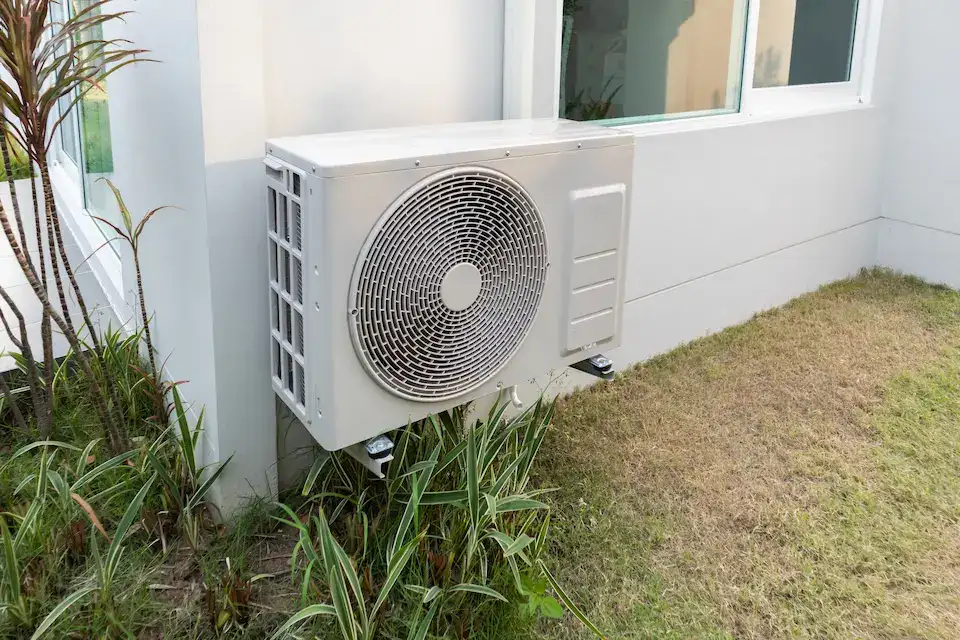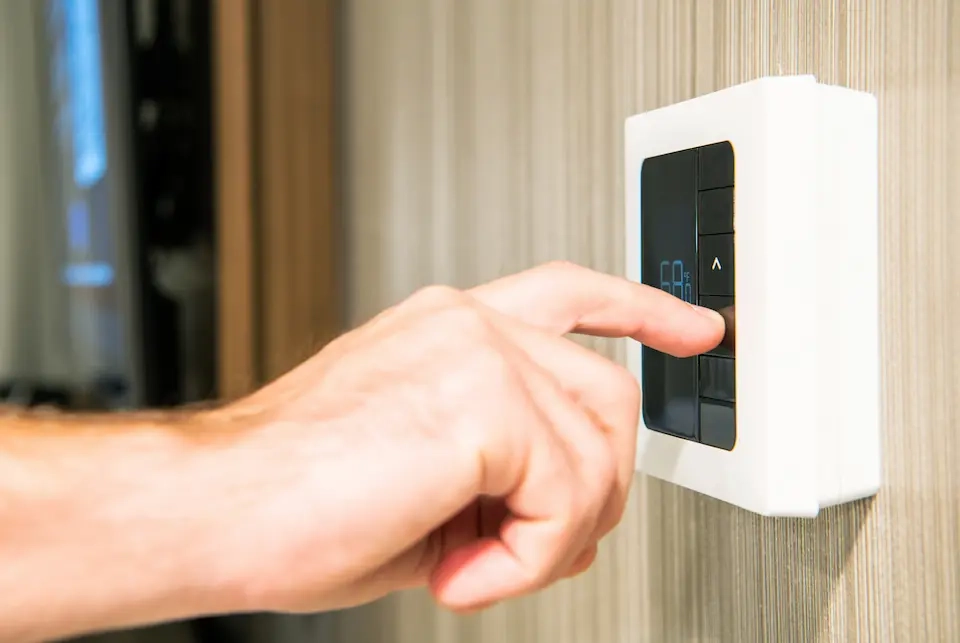If you're looking for an efficient and effective way to cool your garage, a mini-split…
Choosing the Right Fit: How to Determine the Size of Your Mini Split System
Home » HVAC Blog Articles » Choosing the Right Fit: How to Determine the Size of Your Mini Split System
Mini-split systems have gained immense popularity in recent years for their energy efficiency and versatility. These ductless heating and cooling systems are a smart choice for homeowners looking to maintain a comfortable indoor environment year-round. However, one critical factor often overlooked is the size of the mini-split system. Selecting the right size is paramount to ensure optimal performance, energy efficiency, and comfort.
Our experts in mini-split HVAC systems are sharing the secrets of how to assess your heating and cooling needs, common sizing mistakes to avoid, sizing guidelines, and selecting the right mini-split system for your Raleigh-area home.

Understanding Mini Split Systems
Mini split systems for heating and cooling have gained popularity over traditional air conditioners in recent years. A mini-split system, also known as a ductless mini-split system or multi-zone system, consists of two main components: a condenser outdoor unit and an air-handling indoor unit. These units work together to provide both heating and cooling to specific zones or rooms in your home.
The key advantages of mini-split systems include their energy efficiency, flexibility, and quiet operation. Unlike traditional central HVAC systems, mini splits do not rely on a network of ducts, reducing energy loss and allowing for precise temperature control in individual areas. However, to harness these benefits fully, it’s crucial to get the sizing right.
The Significance of Sizing for Mini Splits
Why does the size of your mini-split system matter so much? Proper sizing is essential for several reasons, including:
Energy Efficiency: An oversized system will cycle on and off frequently, wasting energy and causing temperature fluctuations. An undersized system will struggle to maintain comfort, running constantly and also wasting energy.
Comfort: Incorrect sizing can lead to hot and cold spots in your home, leaving some areas uncomfortable while others are too hot or too cold.
Longevity: An improperly sized system is likely to experience more wear and tear, leading to a shorter lifespan and more frequent repairs.
Operating Costs: A well-sized system will operate efficiently, saving you money on your energy bills over time.
Environmental Impact: An energy-efficient mini-split air conditioner reduces your carbon footprint by consuming less energy.
What Size Mini Split Do I Need?
To determine the mini-split size that’s best for your home, you need to assess your heating and cooling needs accurately.
Several factors influence your home’s heating and cooling capacity loads:
Climate: Your geographical location plays a significant role in determining the amount of heating and cooling your home requires.
Insulation: The quality of insulation in your home affects how well it retains heat or remains cool, impacting your system’s workload.
Square Footage: The size of your living space is a fundamental factor. Larger areas, such as a garage or all-weather room, require more powerful systems.
Occupancy: The number of people living in your home also affects your heating and cooling needs.
How to Calculate Heating and Cooling Load for Your Home
To calculate your specific heating and cooling load for a new mini-split AC unit, you can use a method called Manual J calculation, which takes all of the above factors into account. Alternatively, there are online tools and software available that can provide estimates based on your input. However, for the most accurate assessment, it’s advisable to consult a professional HVAC contractor. They can conduct a thorough evaluation of your home’s unique requirements.
Common Mini-Split Sizing Mistakes to Avoid
When it comes to sizing mini-split systems, several common mistakes can lead to suboptimal performance and increased costs:
Oversizing Mini Split Systems: Many homeowners believe that bigger is better. However, an oversized system will short cycle, leading to inefficient operation and decreased comfort.
Undersizing Mini Split Systems: On the other hand, choosing an undersized system will struggle to meet your heating and cooling needs, running continuously and still failing to maintain a comfortable environment.
The “Rule of Thumb” Approach: Some people rely on rough estimates or “rule of thumb” guidelines, which can lead to inaccurate sizing.
Ignoring Environmental Factors: Failing to consider climate, insulation, and other environmental factors can result in an improperly sized system.
It’s crucial to avoid these sizing pitfalls to make the most of your mini-split system.

Mini Split Sizing Guidelines
To ensure you choose the right capacity (measured in BTU/h) for your mini-split system, consider the following guidelines:
Zoning and Multiple Indoor Units: If you plan to heat and cool multiple rooms or zones, calculate the load for each area and select a mini-split system that can accommodate them all.
Dual and Multi-Zone Systems: Dual and multi-zone systems allow for even more precise control over your indoor environment. They can be a great solution for larger homes or those with varying heating and cooling needs.
Considering Future Needs: Think about any potential changes to your living space in the future. Are you planning an addition or renovation? Factor in these changes when sizing your mini-split system.
Selecting the Right Mini Split System
Once you have a clear understanding of your heating and cooling needs, it’s time to select the right mini-split system.
Consider the following factors when installing a new mini-split system for your home:
Brand and Model Considerations: Research reputable brands and models known for reliability and performance.
SEER and HSPF Ratings: Check the Seasonal Energy Efficiency Ratio (SEER) and Heating Seasonal Performance Factor (HSPF) ratings to gauge energy efficiency.
Inverter Technology: Inverter-driven compressors are more efficient and provide better temperature control.
Additional Features and Options: Look for features like Wi-Fi connectivity, air purification, and dehumidification, depending on your preferences and needs.
Installation and Maintenance
Even with the right-sized system, proper installation, and regular maintenance are critical for long-term performance and efficiency.
Be sure to:
- Choose a Certified Technician: Hire a qualified and reputable Raleigh HVAC contractor with experience in installing mini-split systems.
Regular Maintenance: Schedule annual preventative maintenance to clean filters, check refrigerant levels, and ensure all components are in working order.
Monitor Energy Consumption: Monitor your energy bills and system performance to detect any issues early.

Cost Considerations
While it’s essential to select the right-sized mini-split system for your home, it’s also crucial to consider the costs involved.
Here are some cost considerations for mini-split heating and cooling systems:
Upfront Costs vs. Long-Term Savings: While a properly sized system may have a higher upfront cost, it will lead to long-term energy savings and comfort.
Return on Investment (ROI): Calculate the ROI of your mini-split system based on energy savings, reduced maintenance, and increased home value.
Financing Options and Incentives: Explore financing options, rebates, and tax incentives that may be available for energy-efficient home improvements.
Contact Bowman Mechanical for Mini-Split Solutions in the Raleigh Area
Choosing the right size for your mini split system is paramount to ensure efficient operation, comfort, and cost savings. If you want to consider a new mini-split installation but are unsure of where to begin, contact Bowman Mechanical Services for a consultation to assess your home’s heating and cooling needs. Our professional HVAC contractors have helped many Raleigh homeowners make the right HVAC choices for their homes.
Get started today by calling us at 919-772-2759 or filling out the contact form below.
Contact Our Heating and Air Conditioning Repair Company Today!
We would love to hear from you! Please fill out this form and we will get back to you shortly.
Related Posts
- Best Mini Split for Garage - How to Choose the Right System for Your Space
- Mini Split vs Central Air: Which is the Best Air Conditioning System for Your Home?
When it comes to keeping your home cool and comfortable, choosing the right air conditioning…
- Choosing a Gas or Electric Furnace
If you're choosing between a gas and electric furnace, we're sharing the benefits and drawbacks…
